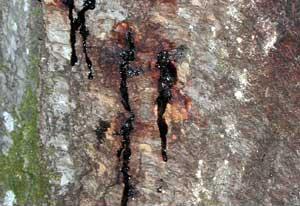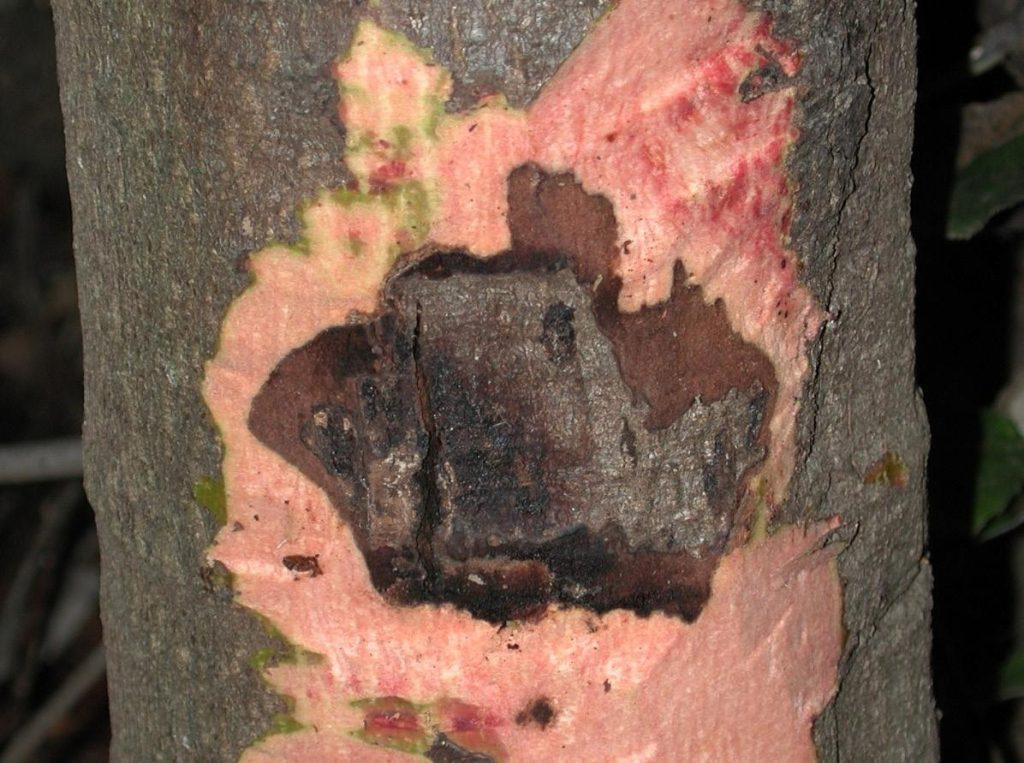Sudden Oak Death
Sudden oak death (SOD) is the common name for a fatal tree disease caused by Phytophthora ramorum, a species of oomycetes (water molds) that are similar to fungi.
SOD is one of 59 described species of Phytophthora, all of which cause disease in plants. Many Phytophthora species attack roots in poorly drained or anaerobic soils. The primary hosts of SOD are coast live oak, California black oak, Shreve oak, tan oak, and canyon live oak occurring in the coastal areas of California and southern Oregon. P. ramoram also causes Ramoram blight on well over 100 species of cultivated plants; including other hardwoods, conifers, shrubs, herbaceous plants and ferns. Symptoms in other species are often expressed as leaf blight. P. ramorum can also cause foliar disease in Douglas-fir, coast redwood and California bay laurel. Unlike many Phytophthora species that infect roots, P. ramorum is mainly a foliar pathogen.
Common Symptoms
Leaves will appear drought- stressed, sometimes turning dull green, yellow, red, or purple as they wilt. Infected bark will be water- soaked, with red-brown discoloration and a disagreeable odor. Bleeding cankers form at the base of the trunk and eventually stem girdling and death. SOD infection is usually followed by bark beetle and/or ambrosia beetle infestation and/or an alternate pathogen infection.
SOD symptoms are very similar to other common fungal infections. A positive identification of the disease requires sending a tissue sample to a qualified lab.
Treatments
We recommend the use of PHOSPHO-jet™, a systemic fungicide for treatment of SOD. Arborjet recommends a two-pronged approach:
First, apply a micro-injection of PHOSPHO-jet into susceptible host trees. Second, amend the soil around the tree with humates (high quality organic matter). Phytophthora thrives in poorly drained and anaerobic soils. The addition of humates will help to increase soil aeration and make the root environment less conducive to disease development.
An application of TREE-äge® G4, or TREE-äge R10 should also be considered to deal with potential bark beetle and ambrosia beetle infestations
When To Treat
When treating for SOD, it is best to treat in Fall to minimize the risk of spreading the infection. Disinfect drill bits and injection needles between trees.
What To Expect After Treatment
Tree recovery will be dependent upon the severity of the Phytophthora infection at the time of trunk injection. PHOSPHO-jet acts as a fungicide and, as an added benefit, stimulates new root growth. The addition of humates will create a soil environment that favors root growth over disease development.
References And Photo Credits
Cracks and Bleeding on bark surface from Wikipedia
Bleeding canker with bark removed taken by Utah State University





